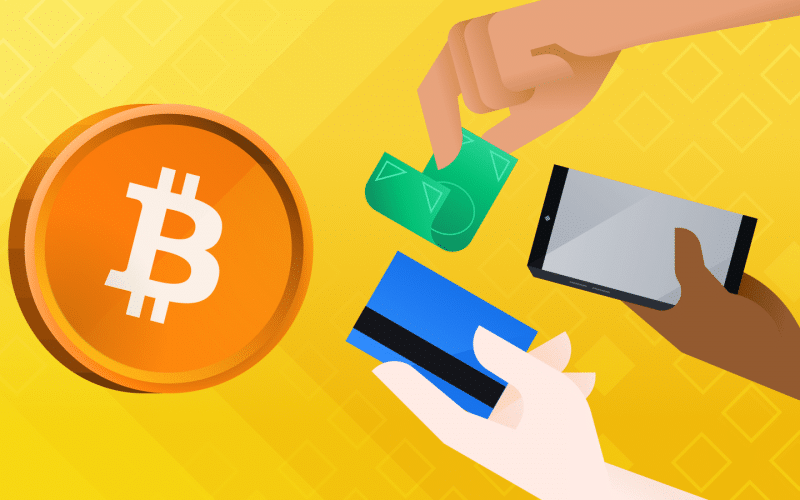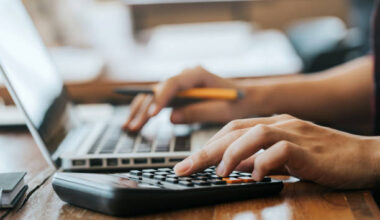When you divide investing in Bitcoin down into phases, it becomes a lot simpler. There are fewer steps involved in buying Bitcoin now, and exchanges and wallets are becoming more reputable. For more precise information, click here.
Considerations before Purchasing Bitcoin
Every potential Bitcoin investor should have a few things on hand. A personal wallet separate from your exchange account is also highly advised. We may also obtain Bitcoin through specialist ATMs and peer-to-peer (P2P) exchanges. Be warned, however, that beginning in early 2020. Bitcoin ATMs will progressively demand government-issued photo identification to operate.
Even though bitcoins do not exist in the real world, boasting about massive holdings is never a good idea. Authorizing transactions upon that Bitcoin blockchain is possible for anybody who has the secret key to something like a public address. If thieves discover significant amounts of private keys, they may try to capture them.
#1. Decide on a Trading Platform
You may purchase, sell, and hold cryptocurrencies by signing up for such a cryptocurrency exchange account. For the most part, you should only utilize an exchange if you can withdraw your crypto to a personal online wallet. This feature may or may not be necessary for those who want to trade Bitcoin or other cryptocurrencies. Decentralization with individual sovereignty is central to the Bitcoin ethos. Thus some deals let users stay anonymous by not requesting any personal information from them.
Businesses like this are independent and generally decentralized, meaning there is no one point of control over them all. It may indeed exploit such systems, yet most of the world’s unbanked population benefits from their use. Anonymous trades can allow people in particular situations, such as refugees or those from countries with little or no official credit or banking infrastructure, to join the mainstream economy.
#2. Make Use of a Payment Option by Connecting Your Exchange
You must gather your papers after selecting a trading platform. In particular exchanges, this may include images of your driver’s license or Social Security card, as well as details about your employment and financial sources. Setting up a brokerage account is quite similar to setting up a bank account. Adding a payment option will be possible once the exchange has verified your identification and validity. Most businesses allow you to link a bank account or a debit card directly.
Due to bitcoin’s volatility, we recommend that you do not buy cryptocurrency with a credit card. However, there are exceptions. Certain banks do not like Bitcoin and may question or even prohibit deposits toward crypto-related sites or exchanges, despite being legal in the US. Check with your bank to see whether you may make deposits at the sale of your choice. Promises made with a savings account, debit card, or credit card have variable costs. Beginners will appreciate Coinbase because of its low fee structure, which charges just 1.49 percent for bank accounts and 3.99 percent for debit transactions.
#3. Make a Purchase
Purchasing Bitcoin is now possible if you have selected an exchange and linked a payment method. The use of cryptocurrency exchanges has grown in popularity in recent years. Their liquidity and feature set have expanded considerably. Operations at bitcoin exchanges are changing in lockstep with how cryptocurrencies are going. Even though it used to be considered fraudulent, the business is steadily evolving into a legal one that has attracted the attention of major financial institutions.
As a result, cryptocurrency exchanges now provide many of the same services as traditional stock brokerages. Kraken has the broadest selection of order types among the businesses, as mentioned above. Market, limit, cease, stop-limit, and take-profit orders are all supported by Kraken.
#4. Storage in a Secure Environment
Wallets for Bitcoin and other cryptocurrencies are places where you may keep your digital assets more safely stored away. If you think there is a hacking scenario in your business, you won’t lose your money since your savings are stored elsewhere.
#5. Hot wallets
Computers, smartphones, and tablets all have internet connectivity. Thus you may use hot wallets. We can create vulnerability since the private keys for your coins are by these wallets on your Internet-connected devices. You can access and perform transactions using your assets fast with a hot wallet, but putting your private key over an Internet-connected device increases the risk of it compromising your wallet.
#6. Cold wallets
Because it’s not linked to the Internet, a cold wallet seems considerably less vulnerable to hacking than a hot wallet. Offline wallets and hardware wallets are other terms for the same thing. When you utilize one of these wallets, you may see your portfolio without risking your private key since they keep a user’s private key on an offline device rather than online. If you’d like a paper wallet, you may generate one from several websites. It then generates a pair of public and private keys, which you can then print out.






